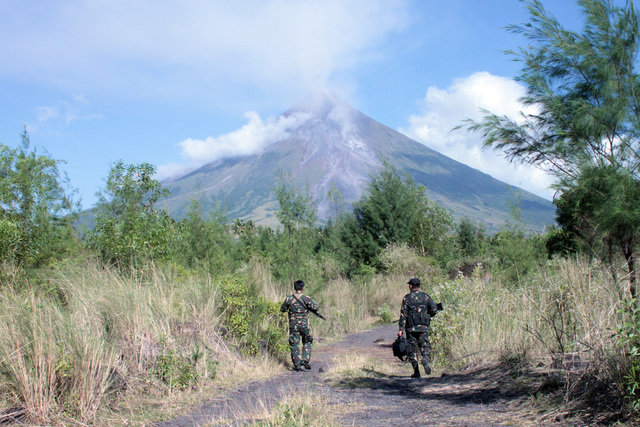
© Rhaydz B. Barcia/RapplerMayon volcano, the Philippines: Volcanologists say magma beneath the so-called 'perfect cone' is building up.
The Philippine Institute of Volcanology and Seismology (Phivolcs) has warned of a possible "big" Mayon volcano eruption in the coming days.
"Phreatic explosion may happen anytime but a big explosion is expected in the coming days," said Philvolcs resident volcanologist Eduardo Laguerta.
Laguerta cited "abnormal activity" similar to what happened prior to the Mayon eruption in 1984.The 1984 Mayon eruption is classified as a Vulcanian-type eruption which involves relatively small but violent explosions of thick lava producing columns of ash, gas, and occasional pyroclastic flows.
"The massive drying up of wells across Albay, specifically in the municipalities surrounding the volcano, may be attributed to the magma movement activity beneath the restive volcano," Laguerta added. He also cited the 3 consecutive earthquakes in August originating from the Sto Domingo fault line, which can affect volcanic activity.
Laguerta said his office asked geodetic engineers from the Phivolcs central office to conduct a ground survey around the volcano following the earthquakes.
"We noted after the survey,
Mayon is inflated, magma beneath the volcano is building up. Deep wells are drying up surrounding the volcano and in several towns here - an implication of abnormal activity," he said.

Comment: See also: Klyuchevskoy volcano in Russia's Far East spews ash cloud up to 7.5 km
Update:
"Klyuchevskoy has erupted ash to a height of 7.5 kilometers above sea level. The ash plume has spread 734 kilometers west and northwest of the volcano," the spokesman said.
An 'orange' aviation alert code has been assigned to the volcano, second after the highest - red code, warning about the hazard eruptions may pose to aircraft flying on local and international routes.